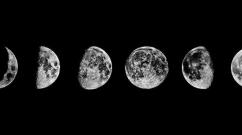Chanterelle pale (chanterelle white). Chanterelle white - a rare variety of yellow chanterelle
Chanterelles (lat. Cantharellus) - mushrooms that belong to the department of basidiomycetes, class agaricomycetes, order cantarellaceae, family chanterelles, genus chanterelles. These mushrooms are difficult to confuse with others, as they have an extremely memorable appearance.
Chanterelles (mushrooms): description and photo
The body of the chanterelles is shaped like the body of the cap mushrooms, but the cap and leg of the chanterelles are one whole, without visible borders, even the color is approximately the same: from pale yellow to orange. Chanterelle mushroom cap from 5 to 12 centimeters in diameter, irregular shape, flat, with curled, open wavy edges, concave or depressed inward, in some mature individuals it is funnel-shaped. In the people, such a hat is called "in the form of an inverted umbrella." To the touch, the cap of the chanterelle is smooth, with a hard-to-remove skin.
The pulp of chanterelles is fleshy and dense, fibrous in the leg area, white or yellowish in color, has a sour taste and a slight smell of dried fruits. When pressed, the surface of the fungus becomes reddish.

The chanterelle leg is most often the same color as the surface of the cap, sometimes somewhat lighter, has a dense, smooth structure, uniform in shape, slightly narrowed towards the bottom, 1-3 centimeters thick, 4-7 centimeters long.
The surface of the hymenophore is folded, pseudoplastic. Represented by wavy folds falling down the leg. In some species of chanterelles, it can be veiny. The spore powder has yellow, the spores themselves are ellipsoidal, 8 * 5 microns in size.

Where, when and in what forests do chanterelles grow?
Chanterelles grow from early June to mid-October, mainly in coniferous or mixed forests, about , or . They are more common in damp areas, in forests. temperate climate among the grass, in the moss or in a pile of fallen leaves. Chanterelles often grow numerous groups, massively appear after thunderstorms.
Chanterelle species, names, descriptions and photos
There are over 60 types of chanterelles, many of which are edible. Poisonous chanterelles do not exist, although there are also in the genus inedible species, for example, false chanterelle. This fungus also has toxic doppelgangers- for example, mushrooms of the genus Omphalote. Below are some varieties of chanterelles:
- Chanterelle ordinary (real chanterelle, cockerel) (lat. Canthar ellusciba rius)
The common chanterelle grows in deciduous and coniferous forests in June, and then from August to October.


- Chanterelle gray (lat. Cantharellus cinereus)
Edible mushroom gray or brown-black. The hat has a diameter of 1-6 cm, the height of the stem is 3-8 cm, the thickness of the stem is 4-15 mm. The leg is hollow inside. The cap has wavy edges and a depression in the center, the edges of the cap have an ash-gray tint. The pulp is elastic, gray or brownish. The hymenophore is folded. The taste of the mushroom is inexpressive, without aroma.
The gray fox grows in mixed and deciduous forests from late July to October. This mushroom can be found on the territory of the European part of Russia, Ukraine, America and countries Western Europe. The gray fox is known to few, so mushroom pickers avoid it.


- Chanterelle cinnabar red (lat. Cantharellus cinnabarinus)
An edible mushroom that is reddish or pinkish red in color. The cap diameter is 1-4 cm, the height of the stem is 2-4 cm, the flesh is fleshy with fibers. The edges of the cap are uneven, curved, the cap itself is concave towards the center. The hymenophore is folded. Thick pseudoplates have pink color. Spore powder is pink-cream.
Cinnabar-red chanterelle grows in deciduous forests, mainly oak groves, in the eastern part North America. The mushroom picking season is summer and autumn.

- Chanterelle velvety (lat. Cantharellus friesii)
An edible but rare mushroom with an orange-yellow or reddish cap. The color of the legs is from light yellow to light orange. The diameter of the cap is 4-5 cm, the height of the stem is 2-4 cm, the diameter of the stem is 1 cm. The cap of a young mushroom has a convex shape, which turns into a funnel-shaped one with age. The flesh of the cap is light orange when cut, whitish-yellowish in the stem. The smell of the mushroom is pleasant, the taste is sour.
The velvety chanterelle grows in the countries of southern and of Eastern Europe, in deciduous forests on acidic soils. Harvesting season is from July to October.

- Chanterelle faceted (lat. Cantharellus lateritius)
Edible orange-yellow mushroom. The fruiting body has dimensions from 2 to 10 cm. The cap and stem are combined. The shape of the cap is carved with a wavy edge. The pulp of the mushroom is thick and dense, has a pleasant taste and aroma. The diameter of the stem is 1-2.5 cm. The hymenophore is smooth or with small folds. The spore powder has a yellow-orange color, like the fungus itself.
The faceted chanterelle grows in oak groves in North America, Africa, the Himalayas, Malaysia, singly or in groups. You can collect chanterelle mushrooms in summer and autumn.

- Chanterelle yellowing (lat. Cantharellus lutescens)
Edible mushroom. The diameter of the cap is from 1 to 6 cm, the length of the leg is 2-5 cm, the thickness of the leg is up to 1.5 cm. The cap and the leg are a single whole, like in other types of chanterelles. Top part caps yellow-brown, with brown scales. The stem is yellow-orange. The pulp of the mushroom is beige or light orange, has no taste and smell. The spore-bearing surface is most often smooth, rarely wrinkled, and has a beige or yellow-brown tint. Spore powder is beige-orange.
The yellowing chanterelle grows in coniferous forests, on moist soils, bears fruit until the end of summer.


- Chanterelle tubular (funnel chanterelle, tubular cantarell, tubular lobe) (lat. Cantharellus tubaeformis)
An edible mushroom with a cap diameter of 2-6 cm, a stem height of 3-8 cm, a stem diameter of 0.3-0.8 cm. The cap of a chanterelle has the shape of a funnel with jagged edges. The color of the cap is grayish-yellow. It has dark velvety scales. The tubular leg is yellow or dull yellow. The flesh is firm and white, with a slight bitter taste and a pleasant smell of earth. The hymenophore is yellowish or bluish-gray in color, consists of rare brittle veins. Beige spore powder.
Trumpet chanterelles grow mainly in coniferous forests, sometimes found in deciduous forests in Europe and North America.


- Chanterelle Cantharellus minor
An edible mushroom similar to the common chanterelle, but smaller in size. The diameter of the cap is 0.5-3 cm, the length of the stem is 1.5-6 cm, the thickness of the stem is 0.3-1 cm. The cap of a young mushroom is flat or convex, in a mature mushroom it becomes vase-like. The color of the cap is yellow or orange-yellow. The edge of the cap is wavy. The flesh is yellow, brittle, soft, with a barely perceptible aroma. The hymenophore has the color of a cap. The color of the stem is lighter than that of the cap. The stem is hollow, tapering towards the base. The spore powder is white or yellowish in color.
These mushrooms grow in deciduous forests (most often oak) in eastern North America.

- Chanterelle Cantharellus subalbidus
An edible mushroom that is whitish or beige in color. Turns orange when touched. Wet mushroom takes on a light brown hue. The cap diameter is 5-14 cm, the height of the stem is 2-4 cm, the thickness of the stem is 1-3 cm. The cap of a young mushroom is flat with a wavy edge, becoming funnel-shaped as the mushroom grows. Velvet scales are located on the skin of the cap. The pulp of the mushroom has no aroma and taste. The hymenophore has narrow folds. fleshy leg, white color, uneven or smooth. Spore powder is white.
Cantharellus subalbidus grows in the northwestern part of North America, found in coniferous forests.

False chanterelles: description and photo. How are they different from edibles?
There are 2 types of mushrooms with which you can confuse an ordinary chanterelle:
- Orange talker (inedible mushroom)
- Omphalote olive ( poisonous mushroom)
Main differences edible chanterelle from false:
- The color of an ordinary edible chanterelle is monophonic: light yellow or light orange. False chanterelle usually has brighter or lighter colors: copper red, bright orange, yellowish white, ocher beige, reddish brown. The middle of the cap of the false chanterelle may differ in color from the edges of the cap. On the hat of the false chanterelle, spots of various shapes can be observed.
- The edges of the cap of a real chanterelle are always torn. At false fungus often smooth edges.
- The leg of a real chanterelle is thick, the leg of a false chanterelle is thin. In addition, in an edible chanterelle, the hat and leg are a single whole. And in a false chanterelle, the leg is separated from the hat.
- Edible chanterelles always grow in groups. False chanterelle can grow singly.
- The smell of an edible mushroom is pleasant, unlike an inedible one.
- When pressed, the pulp of the edible chanterelle turns red, the color of the false chanterelle does not change.
- Real chanterelles are not wormy, which cannot be said about their poisonous counterparts.



False fox or orange talker


Calorie content of chanterelles
The calorie content of chanterelles per 100 g is 19 kcal.
How and how long can fresh chanterelles be stored?
Mushrooms should be stored at a temperature not exceeding +10°C. Freshly harvested chanterelles cannot be kept for more than a day, even in the refrigerator. It is best to start processing them immediately.
How to clean chanterelles?
Mushrooms must be cleaned of debris and damaged mushrooms should be separated from whole ones. Forest debris is removed with a hard brush or soft cloth (sponge). Dirt does not stick to the surface of the chanterelles so strongly that it needs to be cleaned off with a knife. The rotten, softened and damaged parts of the fungus are cut off with a knife. Rubbish is removed from the plates with a brush. This is especially important for subsequent drying.
After cleaning the chanterelles, rinse well, paying attention Special attention on cap plates. Usually they are washed in several waters. If a bitter taste is suspected, the mushrooms are soaked for 30-60 minutes.
Common - an edible forest mushroom that grows in places where there is a lot of moisture. Characteristic appearance will allow to distinguish this mushroom from others and to a person who previously saw it only from a photo. However, not everything is so simple: be prepared that you can meet a false poisonous fox in the forest.
Acquaintance with the fox: appearance
A mushroom named chanterelle is well known to both avid mushroom pickers and beginners in this business. He loves coniferous forest, but also grows in birch and mixed forests - more often singly, but close to each other.
In a common chanterelle, the leg and hat have grown together so much that they do not have a clear transition. The cap is most often funnel-shaped, up to 12 cm in diameter, from light yellow to yellow, with a smooth, matte surface that does not separate well from the pulp. The flesh is firm and very fleshy, white, but slightly reddening when pressed. It tastes sour, even peppery, and smells like dried fruits and roots.
chanterelle mushroom
Advice. Go to the forest after heavy rain. Chanterelles love water and grow en masse after showers.
Chanterelles grow in families. Therefore, in order to bring home a basket or bucket that is not empty, carefully examine the surroundings of the place where the mushroom was found. If there is moss, carefully lift it up. In no case do not cut the mushroom - carefully unscrew it, completely removing it from the ground. Otherwise, damage the mycelium. If everything went smoothly, remember the place, in time it will again be full of mushrooms. Chanterelle is often inseparable in a basket with mushrooms. Mushrooms are similar to each other, but you can still distinguish them with the naked eye:
- the edges of the chanterelle are more wavy;
- the color of the chanterelle is lighter - from yellow to almost white;
- pulp and milk are paler than that of camelina;
- there are no wormholes.
Beneficial features
Chanterelle is always clean and juicy. From excessive moisture, the fungus does not rot, and in drought it simply stops growing without losing juice. Chanterelles can be collected in large containers without fear of crushing, breaking and loss of presentation. This is the case when accessibility is associated with taste and health benefits.

Chanterelles are not only tasty, but also healthy
The mushroom is popular among the people not only because of its nutritional properties, but also because of its usefulness. It contains valuable polysaccharides, 8 essential amino acids, manganese, copper, zinc and vitamins PP, A and beta-carotene. Medicine has discovered in the fungus natural anthelmintic (fighting worms) and hepatoprotective (positive effect on the liver) properties.
And the most useful substance in chanterelles is trametonolinic acid, which is designed to fight hepatitis. ethnoscience speaks of the benefits of the fungus for vision and physical health of the eyes, as well as for immunity and even excretion of radionuclides from the body. In addition, it can be an excellent meat substitute for people who do not eat meat.
Inedible doppelgangers
The poisonous pseudochanterelles include the false chanterelle (it is also an orange talker) and the olive omphalot. They are not related to common chanterelles, although they are similar in appearance. Mushrooms are called conditionally edible. Having kept them in water for 3 days, boiled or stewed, you can eat them, but you will not get pleasure from the signature chanterelle taste and aroma. Experienced mushroom pickers recognize the "scout" by eye. However, if you do not consider yourself to be such, it is better to rely on auxiliary signs:

Orange talker
- The false chanterelle grows exclusively on the forest floor, moss, deadwood, old decaying trees, and not on the soil, like a real one.
- It's brighter than the real thing. Toward the edge of the hat brightens. The surface is velvety. The real one has a uniform color and a smooth surface.
- The edges of the cap of the false chanterelle are smooth and even, neatly rounded. The hat is smaller than the real one. The transition to the foot is not continuous.
- The leg of a false chanterelle is hollow, while that of a real one is fibrous.
Omphaloth is a deadly poisonous mushroom. It grows only in the subtropics and exclusively on tree dust.
Attention! Even a real fox can poison you: the one that grows near industrial enterprise or busy roadway. The fungus collects the radioactive nuclide caesium-137.
Mushrooms on the table
Raw chanterelles taste tough and viscous, even spicy. But they are also eaten this way. In Germany, for example, this is in the order of things, the mushroom is respected there: pickled in vinegar and dried. However, after such processing, the chanterelles become rough in taste, so it is still better to cook them.
Before processing, the mushroom is washed in cold water, peel the plates and cook for about 20 minutes in a large saucepan of salted water, removing the foam. Cooking retains the original spicy taste, and the aroma becomes similar to the smell of cardamom. To surely rid the chanterelles of bitterness, you can soak them for an hour and a half in milk. For a multicooker, the “baking” mode and half an hour on the timer are suitable.

Fried chanterelles
They also freeze mushrooms. Moreover, after cooking, they take up less space. The common chanterelle is 89% water, so when cooked, its size can decrease by 3-4 times. If they become bitter after cooking, sweeten the water with brown sugar.
Chanterelles are used in different dishes: soups, salads, pies. They are also simply fried with potatoes and onions, seasoned with sour cream. Whatever you choose, this mushroom will give the dish a unique taste and aroma. The European serving of mushrooms involves cutting into pieces and seasoning with butter, crushed breadcrumbs, onions, lemon peel and seasonings.
Advice. Despite the content of only 19 kcal per 100 g of chanterelles, they, like other mushrooms, are considered heavy on the stomach. So take precautions when eating.
Chanterelle false and real: video
Chanterelle mushrooms: photo







- a very tasty and elegant mushroom, which got its name because of the bright red color, reminiscent of the color egg yolk. There are also pale yellow chanterelles. The popular name for chanterelles is "roosters". These mushrooms often grow at night in places where they were not there the day before.
Chanterelles in the forest
There are many types of chanterelles known in the world. All of them belong to the Chanterelle family. For a long time, chanterelles were considered agaric mushrooms. Now they are classified as non-lamellar fungi. The most popular in our forests are the common chanterelle, or real, yellow ( Cantharellus cibarius), and chanterelle tubular, or funnel-shaped, autumn, winter ( Cantharellus tubaeformis).
The funnel fox is not as brightly colored as the common fox. The color of this species is more faded, yellowish-brown or gray-yellow. The leg of the funnel-shaped chanterelle is hollow. This mushroom grows in the forest even at the very end of autumn.
In the forests, there is often a tasty funnel-shaped gray chanterelle ( Craterellus cornucopioides), in which the turned outer edge is clearly visible. The pulp is thin, dark. After cooking, the mushroom becomes almost black. The British call the gray fox "horn of plenty", and the Germans - "the pipe of death."
Description of the common chanterelle (Cantharellus cibarius)
Hat. In young chanterelles ordinary (real, yellow) the hat is convex and almost smooth. Tiny button mushrooms have such a short stem that it is not visible at all. As they grow older, the "buttons" rise on the leg. Wavy edges appear on a flat hat, it becomes embossed. An adult chanterelle has a depressed central part on the cap, which makes the mushroom look like a funnel. The diameter of the cap of an adult chanterelle is often about 7 cm.
Records(more precisely, wrinkled outgrowths of the fruiting body) run down the cap to the stem, often to its base. It is more correct to call them outgrowths, because chanterelles do not belong to lamellar, but to non-lamellar mushrooms. It is worth noting that the mushroom practically does not change color when pressed.
Pulp. Yellowish-white, the color of the pulp in the places of the cut does not change. It is dense, crumbles a little, with a typical pleasant smell. Chanterelle is rarely wormy. A common myth is that this mushroom is never spoiled by worms. The number of chanterelle worms in chanterelles is really insignificant compared to other mushrooms. An aging chanterelle has not at all such tasty pulp as in young age. It becomes "rubber", easily absorbs moisture, so it quickly soaks.
Leg. Chanterelle ordinary has a solid leg without a cavity, which smoothly passes to the hat. The size of the legs of an adult chanterelle is highly dependent on the area in which the mushroom grows. So, in wetlands, the length of the leg often exceeds the average 8 cm.
If you went to the forest for chanterelle mushrooms, but did not find it, do not despair. Walk the next day in the same places. You may well find a tasty yellow mushroom where it didn’t even smell yesterday! Yes, yes, these wonderful mushrooms have just such a feature. They very often "pop out" in just one night.
Chanterelles are considered one of the most delicious mushrooms growing in our latitudes. They can be of different shades - there is a light variety that has a pale yellow color, and brighter - a reddish hue, similar to the yolk in color.
Chanterelle species
In total, there are a lot of varieties of this mushroom in the world. They all belong to the same Lisichkov family. We most often meet only two types:
Chanterelle, which is also called yellow or real, has a brighter color.

other names of which are winter, autumn, funnel-shaped. It has a pale color.
Chanterelles are mushrooms with excellent qualities. They are delicious and safe. They are practically not eaten by worms and insects.
Why is it called fox?
Why did these mushrooms get this interesting name? Is it because of his resemblance to a small fluffy animal? Partly yes. Firstly, in the old days these mushrooms were called in a completely different way - cockerels. Then the yellow color had a completely different name - "fox". From him came the name of the cunning little animal - “fox” or “foxes”. Accordingly, mushrooms were also named so due to their unusual beautiful color.
The yellowness of their chanterelles is due to the high content of carotene. It is he who gives a bright color and carrots.
But it is worth remembering the cunning nature of mushrooms, similar to the little animal of the same name. Chanterelles know how to hide well, despite their rather bright color.
Description of the mushroom with a photo

Previously, the chanterelle was attributed to agaric mushrooms. But today the opinion on this matter has changed, it was recognized as a non-lamellar fungus. It is very important to be able to distinguish a fox from false mushrooms, which may be similar to her, but dangerous to health. Therefore, let's take one fungus - an ordinary chanterelle, and consider it in more detail.
Hat
 young chanterelles
young chanterelles Let's start with the hat, which the mushroom picker will see first of all in the forest. In young mushrooms, it has a smooth surface, convex shape. Small chanterelles practically consist of one hat, their leg cannot be seen - too tiny, hidden under the "umbrella".
Over time, the hat loses its perfect shape, its edges acquire waviness. An adult mushroom is distinguished by its middle. A dot appears in the very center of the cap, as if pressed inward. So big chanterelles become a bit like a funnel. Adult mushrooms can have caps reaching 7 cm in size.
 fox family
fox family Plates are hidden under the mushroom cap. But, since today the chanterelle belongs to non-lamellar mushrooms, it would be more correct to call this part the outgrowths of the fruiting body. They are wrinkled. When pressed with a finger or fingernail, the color should not change to a darker or lighter one.
Inside the mushroom, the most delicious thing awaits us - the pulp. The chanterelle has the same color as the surface. Yellow, sometimes brighter or paler, the flesh does not change its hue at the cut points. Her smell is just wonderful, characteristic of edible mushrooms. The pulp does not crumble, but over time it loses its tenderness. Old chanterelles become harsh, "rubber". In addition, with age, these mushrooms acquire the ability to absorb more moisture and begin to quickly soak in the rain.
Leg

And finally, we have reached the last part of the chanterelle - its legs. As a rule, it has a solid shape, inside it is not hollow, it consists entirely of pulp. Its shape is such that it slowly turns into outgrowths, which, in turn, end at the outer edge of the cap. The size of the stem, as, indeed, of the whole fungus, depends on the area where it grows. But on average, the stem can reach 8 cm in an adult mushroom that grows in wetlands.
How to cook
Chanterelles are suitable for preparing a large number of delicious dishes. You can make snacks and soups, sandwiches, hot blues, etc. with them. Their taste qualities are simply incomparable. Therefore, these mushrooms are very popular.
This mushroom is widely used by culinary specialists in European countries. Its popularity is also due to the content of useful substances - zinc, copper, amino acids, as well as vitamins PP, A, B1.
The taste of chanterelles is also different because such mushrooms are practically not grown in an artificial environment. They can only be enjoyed after a pleasant and successful hike in the forest!
fried

Fried mushrooms are one of the favorite dishes of many people. Chanterelles are great for frying or stewing. At the same time, sour cream is most often added to them. This dish can be ordered in many expensive restaurants. And you can just cook at home, it's not difficult and fast enough.
First of all, the mushrooms must be boiled. After that, they are washed and placed in a pan. The top of the container is covered with a lid. So the mushrooms need to be stewed for about half an hour. After the expiration of this time, it is time to add the main spice - salt, to taste. Now you can add other ingredients. These include fried onions, sour cream. Combining all this with our chanterelles, bring to a boil. Everything - chanterelles in sour cream are ready. You can decorate them with greenery. By the way, many note one secret. To make the dish tastier, the onion must be fried not on vegetable oil, but on fat.
Some people cook this dish differently. Chanterelles are simply washed well, cleaned. Without boiling them first, the mushrooms begin to stew in sour cream or cream. This process should last at least 45-60 minutes. At the very end, you can add a couple more tablespoons of sour cream with a high percentage of fat, but so that it does not have time to boil with mushrooms.
baked

Baked chanterelles deserve no less attention. To prepare such, it is necessary to clean the mushrooms well, rinse and finely chop.
Then they need to be boiled, but not for a long time - only about 5 minutes. After draining the water in which the mushrooms were boiled, they need to be poured into the pan.
Add a sufficient amount of vegetable oil there and simmer the chanterelles for about 25-35 minutes. In this case, the mushrooms must be covered with a lid.
After completing this process, the chanterelles need to be salted. Now it's time to lay out the "saffron mushrooms" in a baking dish, of course, previously greased.
A mass of grated hard cheese mixed with mayonnaise is laid out on top. Mushrooms are cooked in the oven for only 15-20 minutes.
Casserole
From the same ingredients, you can cook a casserole, alternating layers of mushrooms and cheese with mayonnaise. The last one should be on top. The casserole is considered ready when the cheese layer acquires a golden crust.

Liquid dishes from chanterelles are prepared by the most different ways. Here is one of them. Chanterelles must be washed and cut. You also need to prepare the onion - peel, chop, fry in lard or vegetable oil. When everything is ready, combine the onions and mushrooms.
Now you need to add a little water to the composition - only about 3 teaspoons. It is necessary to extinguish all this on low heat for up to half an hour, maybe a little less. Soup preparation is ready.
You can also add other ingredients to it, according to your taste - diluted flour, which will add density, pearl barley.
From vegetables, chopped potatoes, carrots, previously grated, are added to such a soup. This delicious soup should be served with sour cream and fresh chopped herbs.
It is worth noting that the chanterelles themselves give a wonderful broth - very fragrant, rich. Therefore, it is not necessary to fry the onion, not everyone likes it, and it can slightly interrupt the aroma of mushrooms.
Do not forget that when cooking, you need to drain the first water - after the mushrooms just boil. They are washed and filled with fresh clean water.

Who doesn't love pickled mushrooms? And chanterelles in this regard are simply incomparable. They are not only tasty, but also look very beautiful on the table.
To prepare such a miracle, you can use the following recipe. Chanterelles are thoroughly cleaned and washed in several waters. The output should be about 1 kg of raw materials. Then the yellow mushrooms must be boiled - not for long, for about 10-20 minutes. When the mushrooms are ready, they need to be drained. A colander is perfect for this. Now the chanterelles must be poured with clean water and boiled again, for about half an hour. This clear liquid with chanterelle broth will later be used to make the marinade.
So, we make the marinade as follows.
For 1 liter of liquid, you need to take a bay leaf, 1 tsp. sugar, cloves (2 pieces) and a few pieces of whole allspice. As for salt, 1 tbsp is enough. l. Bay leaf can be obtained after some time. He will have time to give his aroma in 20 minutes. And if left to cool, it can slightly spoil the overall taste with too strong a smell. Another important ingredient is vinegar. 8% will do, about 2/3 of a regular glass.
When everything is ready, the mushrooms, along with the fragrant marinade, are laid out in glass jars. You need to keep such a dish in a cold place.
It is important to note that if you close pickled chanterelles or other mushrooms with metal lids, then you need to eat them as quickly as possible - even during the current year. Otherwise, there is a risk of botulism.

Many people note that after freezing, chanterelles lose their taste qualities. They seem to get bitter. But what to do? Often mushroom pickers who are lucky collect a lot of yellow mushrooms - a bucket or even a few! They can be stored fresh for no more than a day, after which they begin to deteriorate, lose their value. Of course, you can eat a little by preparing a casserole or soup, stewed mushrooms, or marinate. But in order to eat chanterelles in winter as if they had just been brought from the forest, it is best to freeze them. And do not believe the one who said that they will become bitter. These people just don't know how to freeze chanterelles properly!
First of all, you need to properly prepare the mushrooms. This applies not only to chanterelles, but also to other forest dwellers with a hat.
- Firstly, if you don’t have the strength or time to clean them immediately after harvesting, then you need to leave the mushrooms in a cold place. In heat, chanterelles lose their qualities very quickly.
- Secondly, you need to carefully sort out your prey and sort by size. Old chanterelles can be immediately sent to the kitchen for fast food. But the young ones are the most for freezing.
- And, thirdly, the mushrooms need to be cleaned and washed, preferably under running water, and not in a basin. But you don't have to soak them. They will pick up moisture, for freezing it is superfluous.
On the contrary, the washed mushrooms need to be drained and held a little in a colander so that the liquid is well glassed. After that, you can put the chanterelles on a towel, for example, paper. They dry well and are ready to freeze.
To freeze chanterelles and store them longer, you can use two methods. According to the first, you need to take bags or containers into which washed and dried mushrooms are poured. But in this case, it is not always possible to avoid the appearance of buckwheat, which has already been discussed before.
The second method allows you to prevent the appearance of bitterness. But mushrooms can lose more useful properties. Before freezing, it is recommended to pour chanterelles with water and bring to a boil. You can salt them a little. Freeze mushrooms for no more than 20 minutes. Next, the chanterelles need to be drained, washed and dried, laid out on paper napkin. Now you can put the mushrooms in a thin layer on a board or pallet and send it to the freezer. After they harden, the mushrooms are placed in containers or bags for longer storage.
In both cases, it is very important to consider one point. It is impossible to defrost and freeze mushrooms several times, including chanterelles. Therefore, when using the first method, the portions should be such that all the mushrooms are used at once. And the second method allows you to simply pour the right amount of chanterelles without defrosting them. By this, by the way, this method of freezing also favorably differs from the other.
How long can chanterelles be stored frozen? According to mushroom experts, you should not keep them longer than 90 days. But for this, we freeze the mushrooms so that we can enjoy them throughout the entire time until the new season chanterelles. Indeed, they can be stored for longer. But you can’t argue with some arguments: over time, the qualities of mushrooms are lost. Even in the freezer, you can not save for very for a long time excellent taste of mushrooms, their aroma.
Chanterelles are clear favorites among many mushroom pickers. And this is not surprising, given all their qualities. But there is one “but” to which you need to pay attention. These mushrooms have a counterpart - the mushroom is not edible. Very often people confuse with him a real fox, especially inexperienced mushroom pickers. In that case, instead of delicious meals fragrant chanterelles can cause poisoning and indigestion. Therefore, it is worth going to the forest for chanterelles with a person who knows these mushrooms well. Or, first, study everything about yellow mushrooms and their counterparts.

You can confuse fox mushrooms with false chanterelle. This agaric mushrooms that belong to the Svinushkovye family.
There are several signs by which these two fungi are distinguished:
Smell
In false chanterelles, it is rather unpleasant;
Color
The false chanterelle has a brighter hat. Its color is not yellow, but a bright ocher-orange. The plates also differ in color. They may be orange with a reddish tint. The pulp of the false chanterelle sometimes has a pink color.
Leg
It is quite fragile in a false mushroom. In addition, the leg is darker towards the bottom, at the base.
Form
False chanterelles do not have such pronounced waves on the hat as real ones.
Today, most experts believe false fox not poisonous. But this mushroom is of a much worse quality than edible varieties of chanterelles. When using a false yellow mushroom, you can get an upset stomach.
Video about mushrooms growing in central Russia - Chanterelles: video
On a fine September day, it's so nice to get out into the forest. Nice weather, Fresh air, an abundance of mushrooms and berries - all these are the components of an autumn outing into nature. If you first decided to go out of town as a mushroom picker, then you should approach this matter as consciously as possible. What do chanterelle mushrooms look like, where mushrooms grow, how to distinguish a toadstool? If you do not know the answers to these questions, then your health may be in serious danger. Today we will try to learn more about the most famous finds in the forest.
Description of the common chanterelle
A real delicacy is the chanterelle mushroom. Its description is simple, it is difficult to confuse it with other representatives of the forest kingdom. So, it has a very bright and pleasant color, saturated yellow, similar in hue to yolk. chicken egg. In some cases, the shade can vary from pale yellow to orange. To the main hallmarks also include:
- A hat resembling a funnel, with uneven, torn edges. Its average diameter is 10 centimeters.
- The stalk, thin at the base and wide at the cap, is very dense and lighter in color, smoothly flowing into the cap.
- Pulp with a specific, sweet smell that many people like. It is a mixture of aromas of fruits, roots, dried herbs.
- A real chanterelle cannot be wormy.
Useful properties and composition
Now that you know what chanterelle mushrooms look like, it would be useful to learn about their beneficial properties. First of all, it is necessary to mention that they contain a large amount of vitamin B and many useful substances. Among them are calcium, magnesium, copper, zinc and even selenium. In addition, they have potassium, copper, phosphorus. Thanks to such useful properties chanterelles are recommended for people suffering from eye diseases. These mushrooms help maintain vision at the proper level and improve the condition of the mucosa. In addition, chanterelles are very useful for liver problems, hepatitis, and obesity.

The most important component

What does a false fox look like?
In fact, it is not enough to know what chanterelle mushrooms look like, it is much more important to distinguish them from their counterparts. TO characteristic features such false chanterelles can be attributed:
- reddish tint;
- the hat has the correct shape, there are no distinctive torn edges;
- the pulp of the leg is not dense, almost absent, inside it is hollow;
- no smell, neutral taste.
If you want to see examples of what false chanterelle mushrooms look like, photos of them in in large numbers found in specialized literature. However, it should be noted right away that poisonous properties have not been proven.
Various varieties of mushrooms
There are several varieties of this mushroom, which are not considered false:
- Velvety (has a bright orange color).
- Faceted (common in the USA and Canada, has a more brittle and fragile flesh).
- Gray (distinguished by black color, bright aroma and excellent taste, has long been considered poisonous, mostly because of its appearance).
Chanterelle mushrooms are false, the photos of which are presented below, often called the common talker. It grows in coniferous and mixed forests, and is also found in deciduous groves. It is quite easy to find, since the talker does not hide, it grows in large numbers on stumps, near the road, anthills. This variety is not a chanterelle, just like the chestnut mushroom. However, finding the latter is considered luck, it is extremely rare, has a unique taste and is easily processed.

cooking secrets
What do chanterelle mushrooms look like when cooked? There is only one answer: very appetizing. They easily tolerate transportation, remain unchanged in almost any conditions and are perfectly stored even for a long time. Chanterelles are usually fried, salted, marinated and dried; there are a great many ways to cook them. Good housewives recommend that you first evaporate excess water from them, and only then fry them.

Where to look for foxes?
To collect good harvest, you need to know the secret places where chanterelles (mushrooms) are found. Where do these representatives of the forest kingdom grow? Most often they can be found in birch groves or among coniferous trees, in open sunny glades or deep in moss. Chanterelles grow in whole families, if you meet one mushroom, then there is a second one nearby. As for the time period, they can be collected over a fairly long period, both in summer and in early autumn. August can be considered the most favorable. Chanterelles - mushrooms, photos of which will be a worthy reminder of beautiful autumn. They are as bright as tree leaves, so they can often be overlooked during heavy leaf fall.













